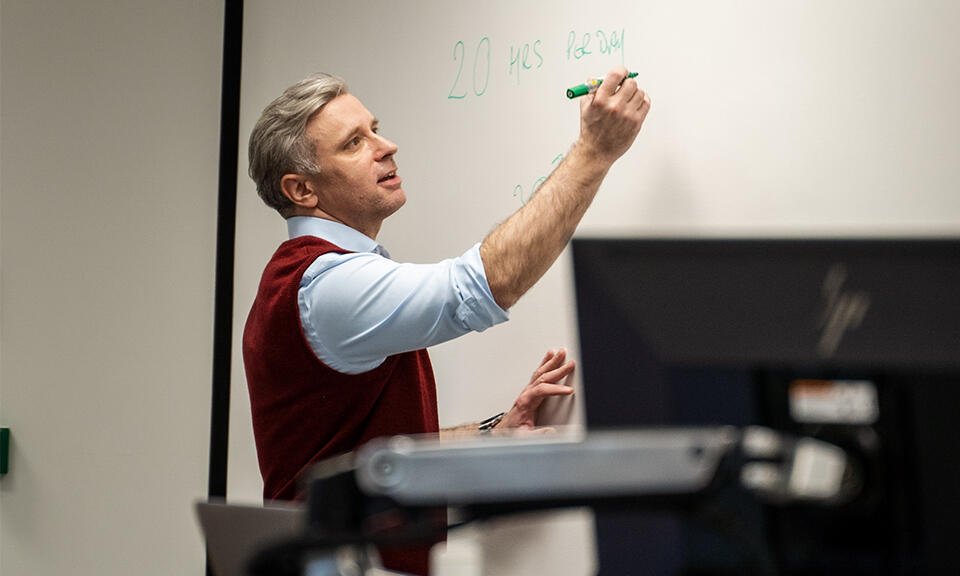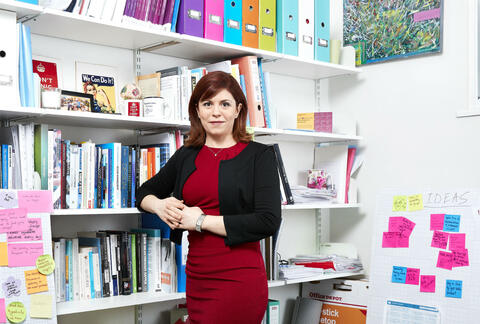Written by
Published
Category
Key topics
If you want to innovate, you have to start with a little messiness
Some leaders think innovation will happen if they throw more resources at a problem, and others worry about the cost of change. But innovation is not a linear process. When we strip down innovation to its bare essentials, we see it’s about imagining the world as it could be (and not as it is).
And imagining demands a different mindset.
Get comfortable with chaos
The first lesson for leaders who want to initiate change is to forget about order and predictability, and be prepared to embrace uncertainty and chaos. I often say to my students at Imperial: “A certain amount of chaos is part of the innovation equation – and needs to be factored in.”
Leaders need to recognise innovation can be messy. Researchers from the University of Minnesota tested how well students embraced new ideas when working in orderly versus messy work areas. They found working with a clean desk encouraged generosity and conformity, while those working in a messy setting were more likely to come up with new ideas. Great innovators like Albert Einstein, Marie Curie and Thomas Edison famously had messy desks, yet the modern office is often a cathedral of clean lines and minimalism that can kill creativity.
A workplace that encourages future thinking has dedicated space to make a mess. Think of Google’s War Room: a place to capture shared thinking, and encourage team cohesion. Multiple whiteboards, glass walls to write on, or even just packs of sticky notes and an empty wall. Make your office a mix of communal areas where teams can carry out activities together, and private pods where people who want peace and quiet can work quietly alone.
Leaders can learn from failures, but first they have to give up control and predictability
As well as space to think together, make your office a space where people can relax and be distracted. That’s when the best ideas can happen. I have my best ideas in the shower or while being in nature.
Good office design can encourage distraction with careful use of colour, lighting and nature-inspired design. Bring the outside in and harness the power of nature with real and artificial plants to bring good ideas to life. Make your office a place of welcome and warmth, where your teams want to work together.
Extend that to the digital space too. I believe nothing can replace face-to-face interaction, but COVID has brought new challenges and many teams have moved to hybrid and remote working. Use digital war rooms to make the process of working together as collaborative as possible – tools like Miro boards and MURAL can encourage creativity in remote teams.
Mindset change: measuring what matters
It’s not just about the outer environment. An innovation mindset is also about being able to deal with a certain amount of cognitive messiness, and learning to be comfortable with uncertainty and ambiguity. In the world of innovation, we call this the fuzzy front end.
Design thinking is a human-centred approach that starts with the discovery phase. We present a problem and we don’t know the answer. We are prepared to go down rabbit holes to find out. We’re fuelled by curiosity. And we’re also ready to be wrong. Thomas Edison once said: "I have not failed. I've just found 10,000 ways that won't work." Leaders can learn from failures, but first they have to give up control and predictability, and create an environment where new ideas can be generated.
Those working in a messy setting were more likely to come up with new ideas
Change has to start at the top. Leaders can model the behaviours and values they want to cultivate in the workforce. Introduce new measures of success beyond KPIs, like valuing empathy and encouraging experimentation. That also means giving employees space to fail. One company I work with has an award for best failure.
They say, when you fail, you learn something.
Invest in innovation
Good design – both in our workplaces and processes – needn’t be expensive. When companies ask me about the return on investment of implementing design thinking, I ask them to reflect on the price of not innovating. Companies face increasing competition, and they either have to innovate or perish. Dr Ralf Speth, CEO of Jaguar Land Rover, said: “If you think that good design is expensive, you should look at the cost of bad design.”
A cultural shift won’t happen overnight. You may not be able to remodel your office straight away, but you can start by upgrading values and behaviours. Build in planned and unplanned distractions. Planned distractions can include away days that have nothing to do with work, but everything to do with building culture. Creating space to think together can encourage teams to come up with novel solutions. It can also foster empathy, which is a core component of design thinking.
Empathy is a gateway to compassion, and, in today’s volatile world, we need that more than ever. That’s the difference between humans and machines: human intelligence has feelings, and being human is sometimes a messy business. The future workforce is one that can tolerate uncertainty and make space for messiness and mistakes. Design thinking can boost both wellbeing and the bottom line, helping companies to thrive. Together, we can imagine and create a better future world. And it may start with getting a little messy.




